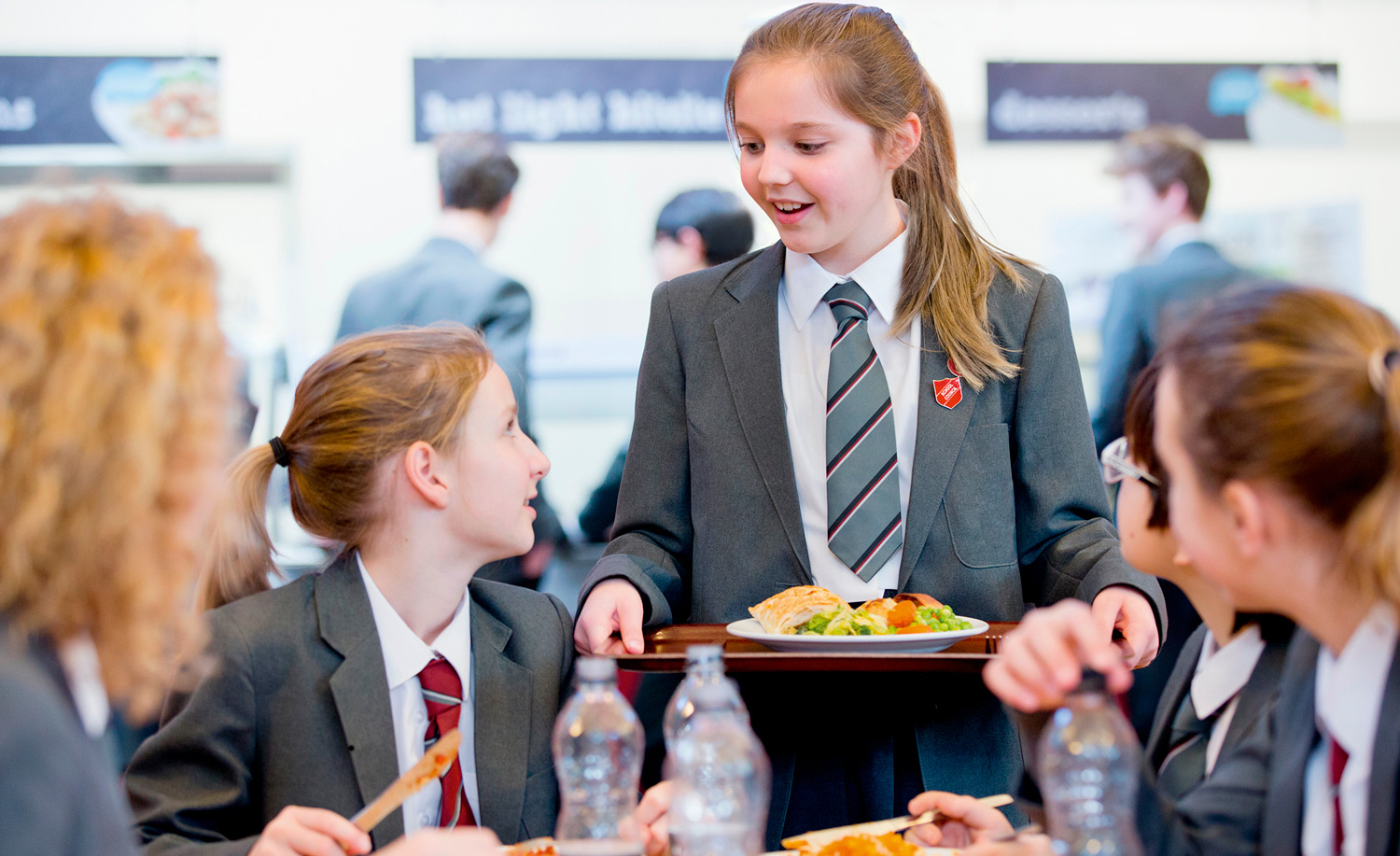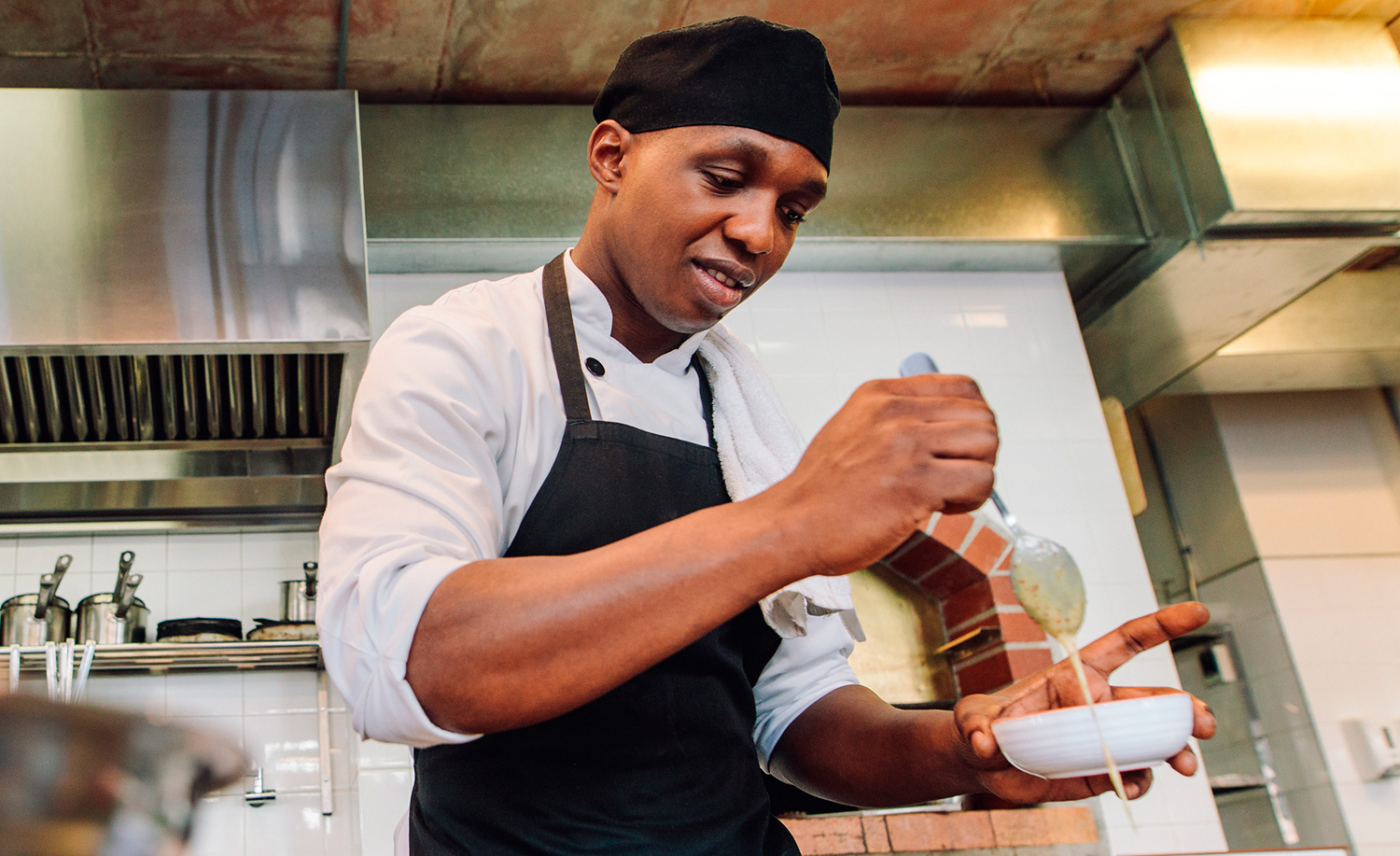Dealing with a Complaint
Dealing with a customer complaint is part and parcel of the industry. However, how you deal with it can determine whether this leads to return custom or a negative online review. TripAdvisor […]
The rising price of food is making it tougher than ever for the sector to provide our young people with what they need to grow, learn and reach their potential.
Both schools and universities face unique demands of their own. For schools, it’s about providing nutritious meals that hit the food based Nutritional Standards, a target set out by the government’s School Food Plan, while sticking to incredibly tight budgets.
For universities, it’s about keeping students on campus and eating healthily when chain operators on the high street, with their huge buying and marketing powers, are luring them away.
So how do our schools and universities keep designing wellbalanced, appealing dishes and meals when their budgets are stretched like never before? And how can the competition for our children’s stomachs be won, while balancing the books?
LACA – the School Food People – represents Local Authority and private catering suppliers in schools. Every day, their members serve up around 3 million lunches in 27,000 schools. If anyone understands the pressures, it’s their National Chair, Jacquie Blake.
“We’re campaigning to have our budgets ringfenced,” she says. “Currently, the allowance for Benefited Free School Meals is £2.47, and the Universal Infant Free School Meals (UIFSM) – for every child in their first two years at school – is £2.34. But the money for school meals is not ringfenced, and a number of caterers do not receive the full allowance.”
LACA wants to see UIFSM funding – static for seven years – increase to cover the rising costs of food, labour and equipment. “This is the best way to deliver healthy and nutritional meals that meet the School Food Standards.”

It’s not just about the budget the school receives from the government – LACA is concerned that, in the wake of Covid, not enough children who have to pay are opting for meals at all.
“With the predicted rise in food costs, it won’t be long before more parents won’t be able to afford their children’s school meals,” Jacquie fears. “That’s why we’re campaigning for a significant increase to the allowance of Universal Free School Meals.”
School caterers are getting creative. “Our members are working together to find ways to provide healthy meals while sticking to very tight budgets,” Jacquie says, highlighting some other key areas worth thinking about. “They say they are looking at substitutions and menu changes to ensure that they meet the standards, and they have support from suppliers. I’d recommend every school caterer to have more conversations with suppliers, other cooks and local catering colleges: help and support, and ideas, are out there,” Jacquie says.
To understand how all of this is affecting school caterers, LACA launched a member survey.
“We asked for their experiences, as well as suggestions and real life data,” says Brad Pearce of CATERed – which provides meals to schools around Plymouth. “It’s important that the voice of the school food industry is listened to when we take the fight to the government and those that can address the issues around costs and funding.”
Over the coming months, LACA will be sharing its findings with us.
Manish Shah is Associate Director at King’s Food, caterers for King’s College in London, and a Non Executive Director for TUCO, a professional membership body for in-house caterers at universities.
“Like the school sector, our costs are not going down, but we have lots of other competing demands,” Manish says.
“Most of our students are Generation Z, young people who are really switched on about food. If we don’t get our offer right, they’ll just go elsewhere,” he says.
Situated in four campuses around the capital, Manish knows how fierce the competition is for these students’ custom.“There are pop-up food stalls, food markets and major chains all wanting a slice of our revenue, so we have to up the game,” Manish says.
“In catered halls the fee is all built-in, but that usually means they have to turn a profit for their university. Like us, they can only do that if their off er is what the students want,” he says.
Catered hall set-ups will use economies of scale and lean production methods to squeeze every last penny of profit out of their operation. “They’ll have one centralised kitchen, and use the same salads in their sandwiches as they do in their dining halls.”

On a campus, they have to consciously opt out. “We aim for around £5.50 a meal,” Manish says. “We have an agreement to break even, and not cost the university a penny.
Mark-ups are low – at around 50% gross profit. “We’ll take a hit to make sure our students stay with us,” he says. “Part of that experience is ensuring they’re fed a healthy, balanced diet.”
But Manish doesn’t keep his eyes off the high street. “Seeing what’s out there means we can forecast what our customers want,” he says.
So in come chefs with a real passion – and skill – to provide world flavours. “Global menus have their advantages, as historically they don’t come from rich communities, and they can make delicious meals with very low-cost ingredients,” Manish says.

“With the recent change in law, allergen management is an extra pressure that caterers are facing. At Knorr, we have a wide range of ingredients that have no allergens to declare, are easy to use and can be used across the menu. For recipe inspiration, search unileverfoodsolutions.co.uk”
“It is important to have cost-effective ingredients in your school kitchens. Favourites such as Angel Delight Mousse and McDougalls Jelly provide opportunities for school chefs to create a huge range of desserts, even on a tight budget. These are also easy to prepare and loved by children.”
Sign in to save topics you love, and build your archive of events, menus and articles.